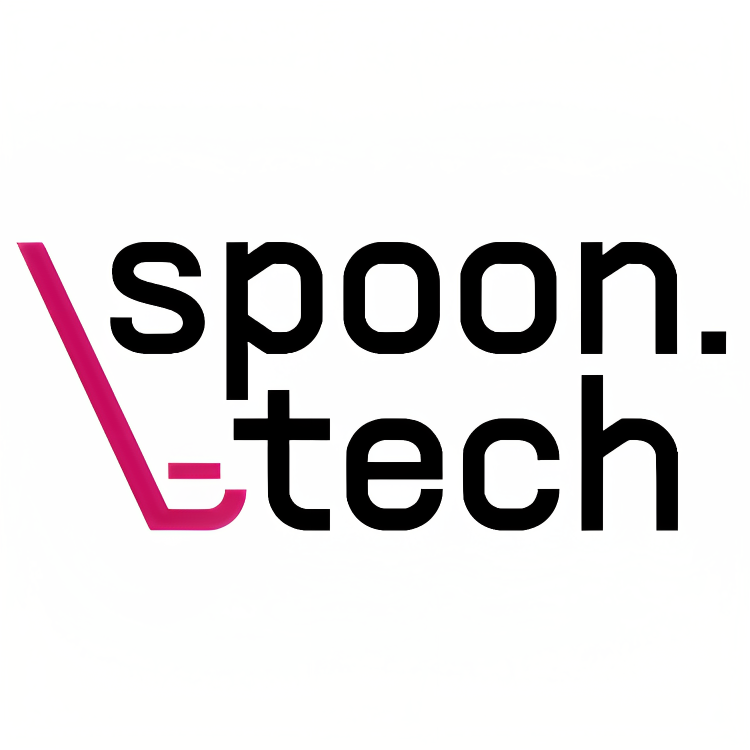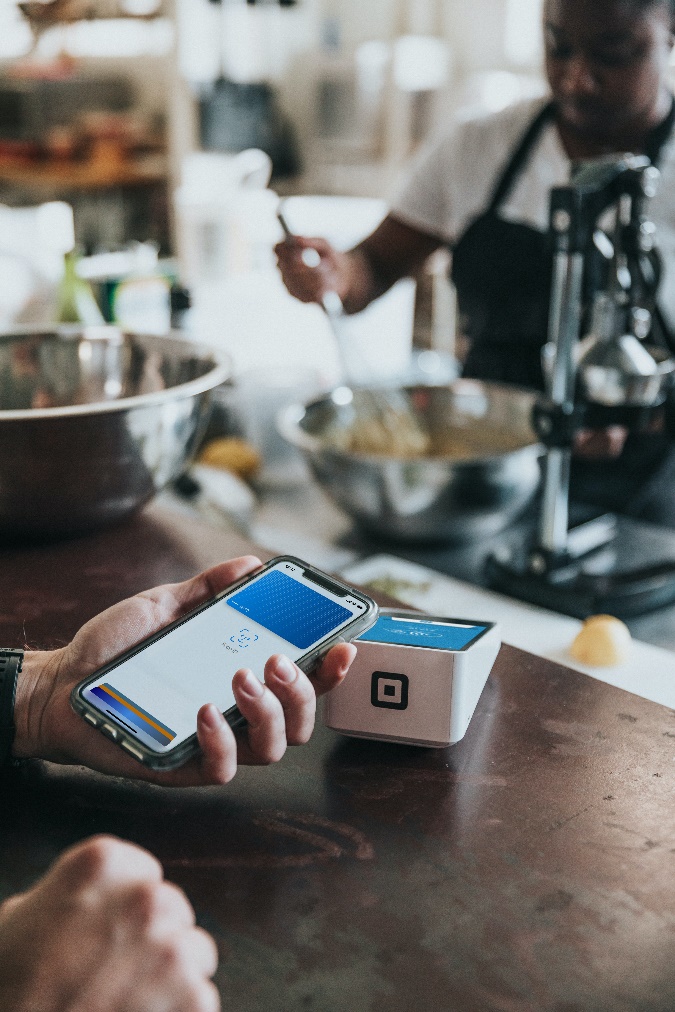Restaurant Automation 101: A Practical Guide
 spoon.tech
spoon.techWhat do you think of when you hear "restaurant automation"? Maybe robots flipping burgers and taking orders? Believe it or not, some restaurants are doing just that. While not every restaurant is ready to take the plunge into robotic automation, many are turning to other types of automation tools and technologies to help streamline operations, reduce costs, and enhance the customer experience. But what exactly is restaurant automation, and how can it benefit your business? In this post, we'll provide a practical guide to restaurant automation, covering topics such as its benefits and drawbacks, the tools available, and how to implement them effectively.

Benefits and Drawbacks of Restaurant Automation
Restaurant automation refers to the use of technology and software tools to automate various tasks and processes in the restaurant industry, such as ordering, payment, inventory management, food preparation, and customer service. With the advent of AI in restaurants, the potential of automation in restaurants has increased significantly in recent times. One of the primary benefits of restaurant automation is increased efficiency and accuracy. Automation tools such as self-service kiosks, mobile ordering apps, and automated inventory management systems can help reduce wait times and expedite service, which in turn can increase customer satisfaction. Automation of certain manual tasks can eliminate errors, and free up staff to focus on other tasks. Additionally, automation can lead to cost savings through reduced labor costs, improved inventory management, and fewer errors.
However, there are also potential drawbacks to restaurant automation, such as concerns about job displacement and loss of personal touch. Some customers may prefer the human interaction and personalized service that comes with traditional restaurant service, and there is a risk of losing that personal touch when relying heavily on automation tools. Another challenge of automation, like any other transformation effort, is the up-front investment required to implement automation technologies, such as purchasing hardware and software, training staff, and integrating new systems with existing ones. Additionally, there is always a risk of technology malfunctions, which can result in downtime, loss of revenue, and dissatisfied customers.
Before implementing any form of restaurant automation, it's important to assess the potential benefits and drawbacks and determine whether it's the right fit for your restaurant to begin with. Before making that decision, it can be helpful to explore the potential operational areas you can automate, and the various tools and technologies available for automation. In the next section, we'll take a look at some of the specific tools and technologies that you can use to automate various tasks and processes in your restaurant.
Tools for Restaurant Automation
There are many different tools and technologies available for restaurant automation, each with its unique benefits and drawbacks. Here are some examples:
Self-service kiosks: Self-service kiosks are touchscreen devices that allow customers to place their orders directly without interacting with a staff member. They can be placed in the dining area or at the entrance of the restaurant, making it easy for customers to place orders and reducing wait times. Self-service kiosks can also help restaurants upsell items by suggesting add-ons or promotions during the ordering process. Many QSRs and fast-food franchises now have self-service kiosks, including McDonald’s, Burger King, and many more.
Mobile ordering apps: Mobile ordering apps allow customers to place orders from their smartphones, either for dine-in or takeout. This can be convenient for customers who want to order ahead, skip the line, or avoid human interaction. Mobile ordering apps can also help restaurants collect customer data, such as order history and preferences, which can be used to personalize the customer experience.
Inventory management software: Inventory management software helps restaurants keep track of their stock levels, monitor product usage, and generate reports on inventory trends. This can help restaurants reduce waste, optimize their purchasing, and avoid stockouts. Inventory management software can also integrate with other systems, such as point-of-sale systems, to streamline operations and reduce manual data entry.
Automated cooking equipment: Automated cooking equipment, such as conveyor belt ovens, can help restaurants increase efficiency and consistency in their food preparation. This equipment can be programmed to cook food at specific temperatures and times, reducing the need for manual monitoring and intervention. Automated cooking equipment can also help reduce labor costs and improve food safety.
Customer relationship management (CRM) software: CRM software helps restaurants manage their customer interactions and data, including contact information, order history, and feedback. This can help restaurants personalize their marketing and promotions, track customer loyalty, and address customer complaints more effectively. CRM software can also help restaurants identify trends and opportunities for improvement in their customer experience.
Staffing and scheduling: Employee scheduling software (e.g., 7 shifts) can help restaurants optimize their staffing levels and streamline their scheduling processes. This software can automate the scheduling process, taking into account factors such as employee availability, skill set, and labor laws.
Employee training and learning management software: With learning management solutions, for instance, spoon.tech, restaurants can shift from manual, in-person training and text-based training materials to automated, self-paced and gamified learning. It can help restaurants ensure that their staff members are properly trained and qualified to perform their roles. This software, with interactive learning materials and gamification features like quizzes, can help employees learn effectively, stay motivated, and develop the necessary skills and knowledge to provide high-quality service to customers. By automating the training process, restaurants can ensure that all employees receive consistent and comprehensive training, which can lead to improved customer satisfaction and employee retention. Additionally, training software can help restaurants comply with industry standards and regulations.
Applicability to Your Restaurant
Does restaurant automation apply to your restaurant, and to which degree? The answer depends on several factors, including the size of your restaurant, the type of cuisine you offer, and your budget. Large chain restaurants and fast-food establishments are often early adopters of restaurant automation technologies, as they have the resources to invest in the upfront costs and benefit from long-term cost savings. However, smaller independent restaurants can also benefit from automation, especially in areas such as order taking, payment processing, and inventory management.
In addition to the size and type of restaurant, the applicability of automation also depends on the specific needs and goals of the business. For example, a high-end restaurant may not want to use self-service kiosks or digital menus because it might detract from the personal touch of the dining experience. On the other hand, a restaurant that caters to a younger, tech-savvy demographic may see these same technologies as a serious competitive advantage.
Ultimately, the decision to implement restaurant automation should be based on a careful assessment of the restaurant's needs and goals, as well as an analysis of the potential benefits and drawbacks of each technology. By considering these factors, restaurant owners and operators can determine which automation tools are most applicable to their specific restaurant, and how they can be implemented to improve operational efficiency, enhance customer experience, and drive business growth.
Implementation Strategies
Once you've determined which automation tools are most applicable to your restaurant, it's important to develop an implementation strategy that ensures a smooth transition and maximizes the benefits of the technology. Here are some key steps to consider when implementing restaurant automation:
Set clear goals: Before implementing any automation tools, it's important to set clear goals and define what success looks like. This could include specific metrics such as increased efficiency, reduced costs, or improved customer satisfaction. By setting clear goals, you can measure the impact of the technology and make adjustments as needed.
Choose the right technology: Once you've set your goals, you can choose the specific automation tools that will help you achieve them. Consider factors such as cost, ease of use, compatibility with your existing systems, and the potential impact on your staff and customers.
Prepare your staff: It's important to involve your staff in the implementation process and to provide them with the necessary training and support to effectively use the new technology. This could include training on how to operate self-service kiosks, how to use inventory management software, or how to process payments through a mobile app.
Test and refine: Before rolling out the new technology to your entire restaurant, it's important to conduct thorough testing to identify any potential issues or challenges. This could involve testing the software in a limited capacity or conducting a trial run with a small group of customers. Once the technology is implemented, be sure to monitor its performance and adjust as needed.
Communicate with customers: When implementing new automation tools, if it affects the customers, it's important to communicate the changes to them and explain how they can benefit from the new technology. This could involve updating your website or social media channels or providing signage in your restaurant that explains how to use the self-service kiosks or digital menus.
By following these steps, you can effectively implement restaurant automation and maximize its benefits for your business.
Conclusion!!!
Restaurant automation is rapidly changing the way the restaurant industry operates, with new tools and technologies making it easier than ever to streamline operations and enhance the customer experience. While there are certainly benefits to automation, including increased efficiency, reduced costs, and improved customer satisfaction, it's important to carefully consider the potential drawbacks and determine whether it's the right fit for your restaurant, and if so, to what extent. If you do decide to implement restaurant automation, be sure to consider which tools are most applicable to your business and develop an implementation strategy that maximizes the benefits of the technology. By setting clear goals, choosing the right technology, preparing your staff, testing and refining the technology, and communicating with your customers, you can successfully implement restaurant automation and take your business to the next level.
If you found this blog helpful and would like to discuss or learn more about how spoon.tech can help you to train your staff like no other and create a more streamlined workflow, please fill out our contact form, alternatively, you can reach out to us via phone at (+43 670 655 56 82) Or email us at hello@spoon.tech.
Subscribe to my newsletter
Read articles from spoon.tech directly inside your inbox. Subscribe to the newsletter, and don't miss out.
Written by

spoon.tech
spoon.tech
spoon.tech is an AI-powered restaurant SaaS for process simplification and employee growth. spoon.tech provides restaurant operators with AI-powered intuitive tools to (finally) systemize processes in their restaurants and enable employee learning.